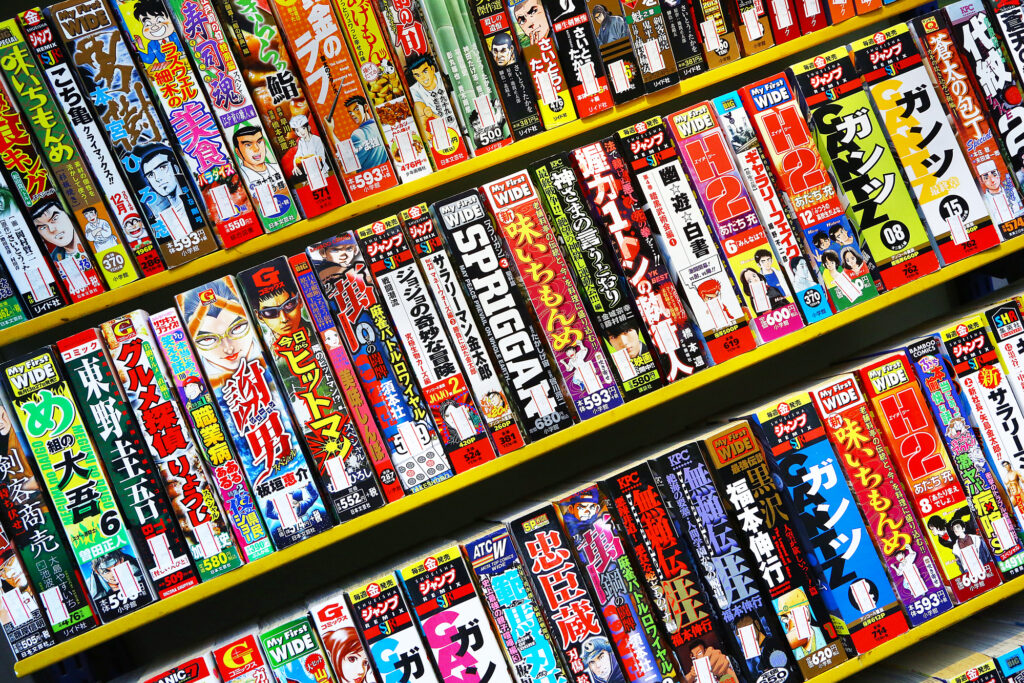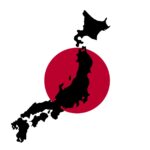If you want to fully immerse yourself in the culture and traditions of Japan, it doesn’t hurt to learn a bit of the language before you go. Learning Japanese can be tough, since the language is so different from Western dialects. Thankfully, there’s a simple, entertaining way to kickstart your language-learning experience.
If you want to start learning Japanese, reading manga is a great place to start. These unique comic books and graphic novels aren’t just for kids—adults around the world enjoy them, too. Manga is an ideal way to start learning to read in Japanese, so you can start identifying some of the common words and phrases you might encounter on your trip.
It might seem like a strange way to jump into learning Japanese, but manga offer great opportunities to really get a feel for the language and the culture it represents. Storytelling is a powerful medium for teaching, and manga are some of the best examples of storytelling in the world!
If you’re a fan of visual storytelling and a comic book art style, you’ll love manga. Here’s how to use manga to start learning Japanese, and some tips on which series are best for beginners.

What is manga?
New to the world of manga? This comic style is popular not only in Japan, but all over the world. Featuring a wide array of art styles and storytelling devices, there’s manga geared toward children and adults, covering an unfathomable number of topics and characters.
Japanese manga is printed in numerous languages—there are plenty of titles in English, and many Japanese books come with an English translation. If you’re using manga to learn Japanese, it’s best to use both Japanese and English books side-by-side, so you can see how the two stack up. Even if you’re not deliberately trying to learn the language, you’re certain to enjoy these gripping stories!
How can manga help teach Japanese?
While you can’t learn the entire Japanese language from manga alone, reading these engaging comics can be a great introduction to this complex language. Here are some of the primary concepts and ideas you can learn, just by reading manga:
- Simple grammar. The Japanese language is based on kanji, the country’s system of writing using characters. Manga is a great introduction to some of the most common kanji you’ll come across, since kanji are learned through study and repetition over time. The kanji found in manga usually have furigana alongside each character, telling you how to pronounce it. You’ll also be introduced to ateji, kanji that represent words based on phonics instead of meaning.
- Onomatopoeia. You’ll find this literary convention not just in manga, but in comics around the world. Put simply, onomatopoeia is a word that’s written as the sound it represents. For example, “Pow!”, “Bang!”, “Boom” and other words add a level of dynamism to any story, especially when they accompany images. The Japanese enjoy onomatopoeia both in and outside of manga. From animal sounds to types of rainfall, you’ll notice a large amount of these words in Japanese, and reading manga is a great introduction to them.
- Widely translated. Manga is popular worldwide, which means it’s not hard to find English (or other) translations of your favorite titles. By placing the Japanese and English version side by side, you can easily compare the two languages and start learning more Japanese kanji and ateji. It also makes manga a less-intimidating way to immerse yourself in the language.
- Lots of adverbs. In manga, adverbs are often used to indicate the feeling of a character or a change in sensation, rather than referring to specific physical objects. Adverbs expressed as onomatopoeic words are also common in manga. It’s a great introduction to conversational Japanese and a simple step up from learning basic vocabulary or phrases.
- Story-driven learning. Story-based learning instills curiosity, motivating the learner to keep going. Manga is all about a great story—plus incredible art. It’s learning made fun! By keeping learners engaged, the story-driven approach to learning manga provides can keep you motivated to learn this new, complex language, even when it gets tough.
How to use manga to learn Japanese
When it comes to using manga to learn Japanese, there are some effective strategies that help you get the most from your efforts. Remember, not only will you be learning new words and concepts, you’ll also be entertained at the same time! Here’s how to use manga to learn Japanese:
- Pick a simple topic. While you can trudge through a manga above your reading level, you might find it tedious and frustrating. It’s best to pick manga with simple topics, like sports, school, romance or food. The first Japanese words and concepts you’ll learn are centered around these everyday routines, so picking a simple “slice of life” manga is your best bet.
- Look up vocabulary. Try to get through as much of a manga as you can, then look up vocabulary words to fill in the gaps. While this can be tedious, it often helps important concepts stick with you. There are several online dictionaries available to help you, plus the furigana in the manga can provide additional context for looking up kanji.
- Take notes. As you read and re-read your favorite manga, use a notebook to take notes of the main kanji you come across. By writing down vocabulary or kanji and its meaning, you’ll reinforce the ideas in your head. And, as you start to recognize kanji across other manga, your brain will automatically begin to translate it thanks to exposure.
- Bridge mediums. Once you get familiar with a manga, look to see if the book series has a television counterpart. Many popular manga do, and it’s a great way to give yourself even more exposure to the Japanese language through a new medium. You’ll already be familiar with the characters and the story, which makes it easier to focus on the words and phrases each character speaks.
5 recommended manga for beginners
Want to get into manga but don’t know where to start? Whether you’re into romantic tales, adventure stories, sci-fi epics or anything else you can think of, there’s a manga out there for you. Some of the top recommended manga for beginners include:
- One Piece. This series is huge in Japan, and it’s enjoyed by people of all ages. You’ll follow Luffy and his crew on their adventures to find One Piece—the legendary pirate treasure. One Piece is also an excellent manga for beginners thanks to the TV series that spun out of the manga. With more than 1,000 episodes, it’s a great opportunity to learn Japanese through both written and spoken mediums.
- The First Step. This boxing anime is easy to understand and fun to read. With fast plot development and fewer words to complicate the pages, it’s easy for complete beginners to understand.More than 100 million copies of the series have sold worldwide, and there’s a massive fan following around it. As a result, there’s tons of opportunity to talk about it online or with other manga enthusiasts.
- My Hero Academia. This iconic superhero story, set in a fictional world, is one of the most popular anime series. It’s perfect for people who have a beginner level of Japanese. The eye-catching art style will keep you wanting more! Plus, this manga has an extremely popular TV series that expands on the manga. Together, the manga and the television show offer plenty of opportunities to learn basic Japanese through a fun narrative.
- Naruto. This popular series is often the first step in every anime-lover’s journey. It’s enjoyable to read and features a fun fantasy theme. There’s also a television show that can reinforce the pronunciations you learn in the manga. With 72 volumes, there’s plenty of runway to dive into the adventure of story of Naruto Uzumaki and his companions, and brush up on your Japanese along the way.
- Akira. One of the best-known manga and anime series, Akira features clear, easy-to-follow action. Most versions are reformatted to read like a Western comic, so the experience will be more familiar for Japanese beginners. Best of all, Akira has been widely translated, allowing Japanese language learners to compare copies in their native language to better-understand the plot and dialogue.
Remember, manga culture is HUGE in Japan, and these five manga for beginners don’t even scratch the surface of the stories out there.
If you’re not satisfied with these popular options, consider looking into Dragon Ball, Bleach, JoJo’s Bizarre Adventure, Attack on Titan, Astro Boy, Fullmetal Alchemist, Berserk, Inuyasha, Tokyo Ghoul and literally hundreds of other titles that have sold millions worldwide.
Learn Japanese and fall in love with a story
Want to challenge yourself and learn something new, all while staying entertained along the way? Manga is a great introduction to the Japanese language, providing a story-based approach to learning that helps important concepts and ideas stick in your head.
There’s never a wrong way to start learning Japanese. Why not pick up a manga title that interests you and get reading? You’ll be surprised at how much you can learn!
- How Much Money Can You Make Teaching English in Japan? - December 12, 2022
- The Best Places to Teach English in Japan - December 9, 2022
- The Best Credentials for Teaching English in Japan - December 8, 2022








